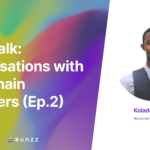Equity compensation has long been a popular way for companies to incentivize and reward employees. With the rise of blockchain technology, businesses can now offer token-based equity compensation via smart contracts and blockchain token vesting wallets.
This blog post will delve into the vesting schedules for blockchain token vesting wallets, including what they are, how they work, and why they are an important tool for companies or employers looking to offer token-based equity compensation.
This guide will give you a comprehensive understanding of vesting schedules and their role in the blockchain world, whether you are a blockchain developer who what to build a vesting DApp, a business owner, an HR professional, or an interested individual.
What is a Vesting Schedule?
A vesting schedule is a plan that outlines the terms and conditions for receiving equity compensation. In traditional equity compensation, a vesting schedule’s main purpose is to encourage employees to stay with a company for a set period before receiving any benefits from their equity compensation.
For example, if a company grants an employee 10,000 stock options, the vesting schedule may limit the employee’s access to 2,000 options per year for the next five years. This means that the employee will have access to all 10,000 options after five years.
Vesting Schedules in Blockchain
Vesting schedules can be applied to token-based compensation in the blockchain world via smart contracts and token-vesting wallets. A blockchain token vesting wallet is a smart contract that governs the distribution of tokens to the recipient over a set period. The vesting schedule contains three critical pieces of information: how tokens will be released, when they will be released, and to whom.
For example, if a company offers 100 tokens to an employee, the vesting schedule may state that the employee can only access 20 tokens per month for the next five months. This means that the employee will have access to all 100 tokens after five months.
At the start of the vesting period, the tokens are locked into the vesting wallet contract. The contract is set up to automatically send a predetermined number of tokens to the recipient’s wallet at predetermined intervals based on the vesting schedule. This helps incentivize employees to stay with the company for a set period and ensures that tokens are distributed according to the vesting schedule.
Cliff Periods in Vesting Wallets
A cliff period is a set amount of time before token vesting begins, usually measured in months or years. The tokens are locked into the vesting wallet contract at the start of the vesting period and are not accessible to the recipient until the cliff period has passed.
For example, if a company offers 100 tokens with a two-year vesting schedule and a one-year cliff period, the employee will be unable to access any tokens during the first year. After one year, the smart contract will automatically release a predetermined number of tokens to the recipient’s wallet at predetermined intervals (e.g., monthly or quarterly) in accordance with the vesting schedule.
Companies can incentivize employees to stay with the company for a certain amount of time before receiving any benefits from their token compensation by incorporating a cliff period into a blockchain token vesting wallet. This allows businesses to reward long-term commitment while ensuring employees are aligned with the company’s goals and objectives.
Conclusion
In conclusion, vesting schedules and cliff periods are useful tools for businesses when providing token-based compensation to employees. Companies can use blockchain token vesting wallets to ensure that tokens are released on time and that employees are incentivized to stay with the company or a project for the desired amount of time. This aids in developing long-term relationships between employees and the company while also providing employees with a clear understanding of their equity compensation and the terms and conditions under which it will be received.
In the blockchain world, vesting schedules and cliff periods are critical components of a successful token-based compensation plan.
Next Steps
Building a vesting wallet can be a complex process, but with the help of a boilerplate, it can be made much easier. This guide walks you through the steps of using the Bunzz boilerplate to build a vesting wallet. The boilerplate provides a pre-written codebase that can be easily customized to meet your specific needs, allowing you to save time, test, and deploy your vesting wallet to a blockchain network.







